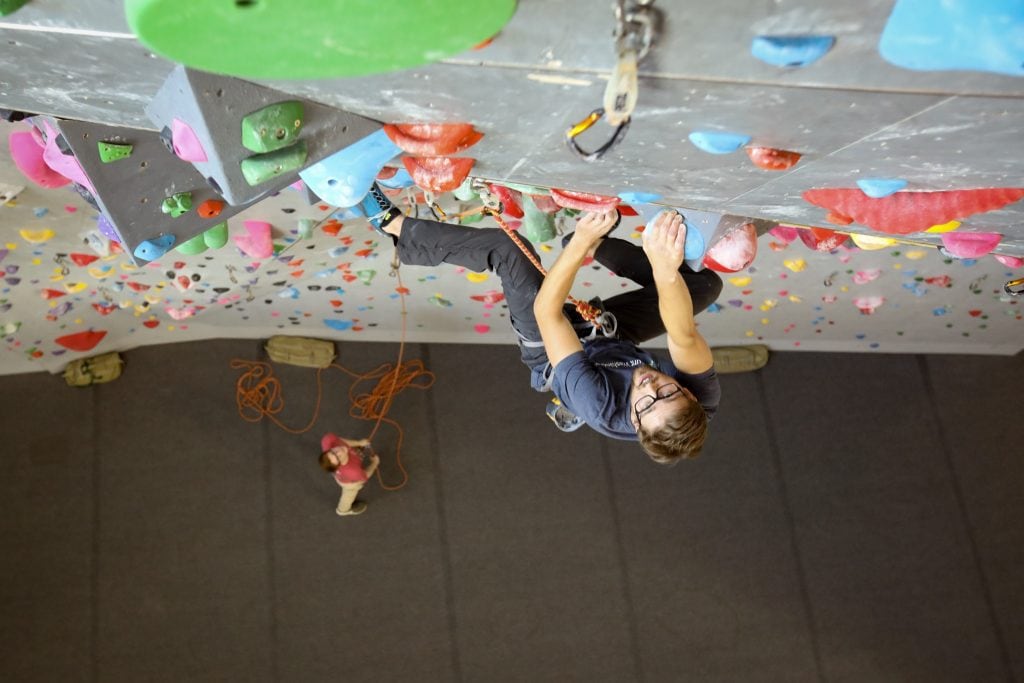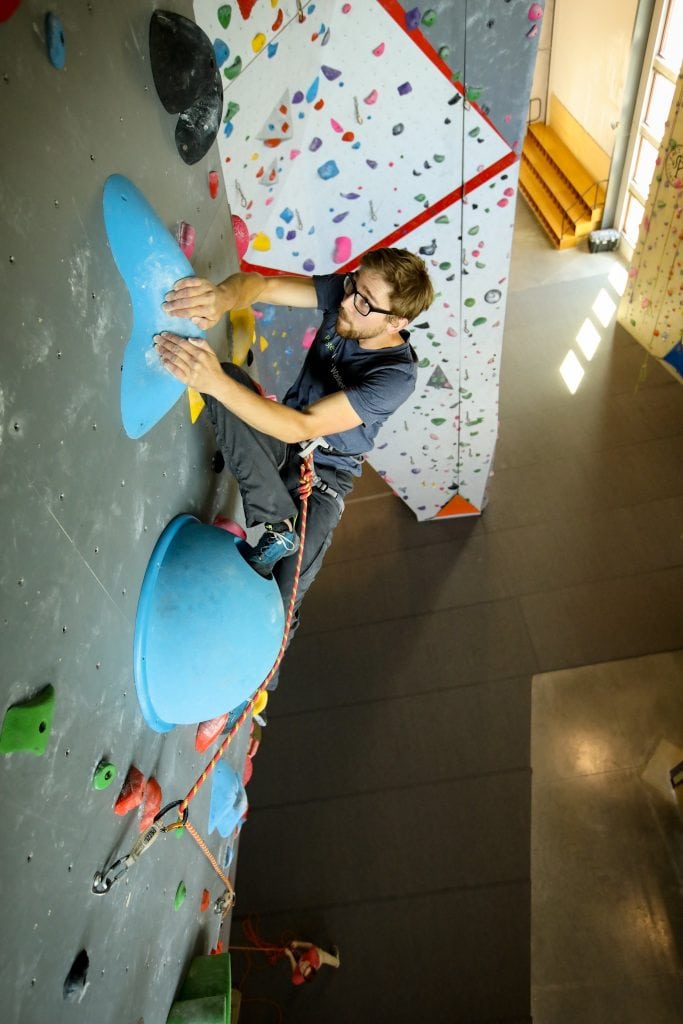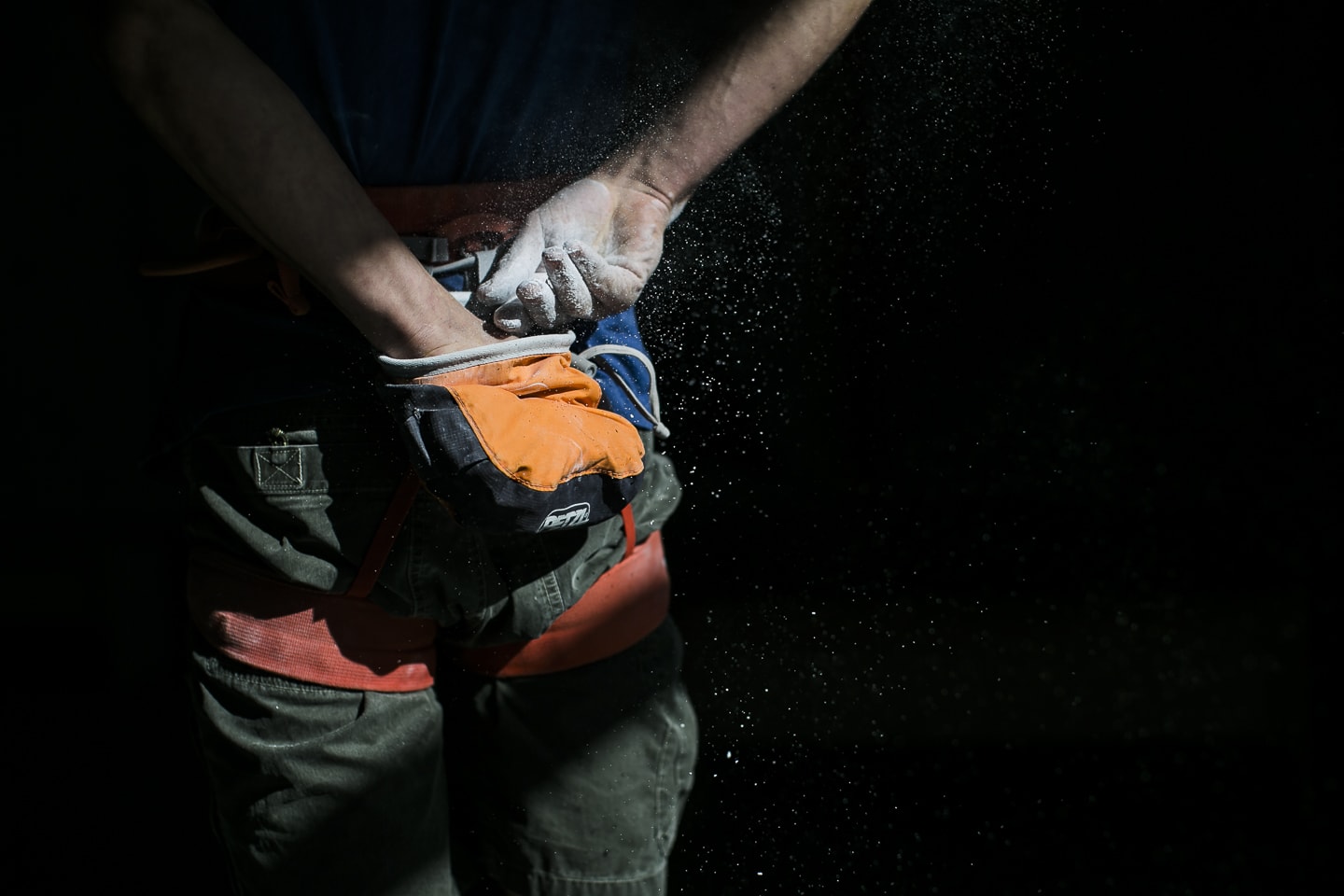Head 2 Head: Mind Games With Will Wild
September 16, 2019
 Fear is a funny thing. When I first started lead climbing I was terrified of falling. I felt helpless on the wall, unable to move above my last clip and into the unknown territory of the iminent whipper. I climbed below my level for a long time trying to build the confidence to push myself. I was afraid of many things. This is how I developed my lead head.
Most climbers have an intricate relationship with fear. Fear is a motivator and a road bump to the goals we set as climbers. If you watch me now you would never guess that that fear is still there, that I still get afraid when I climb past my last quick draw and out on lead.
I no longer look at the fear as a roadblock. It is now a tool in self preservation. Fear has always had that functionality of making you second guess the risky behavior you’re about to take part in. For everyone with an amygdala that feeling will never go away. Becoming comfortable with the fear comes from patience and practice.
First off – it’s totally natural and acceptable to be afraid. I’ve been in situations where the fear is paralyzing. Acknowledging where the fear comes from is a very important first step. What exactly are you afraid of? This is not always an easy question to answer. It may take a few climbs to bring it out. Points of mental tension for me have come from fear of injury, fear of falling, fear of my belayer judging me, fear of failure, and fear of the unknown. I combat these fears with four objective assessments.
Fear is a funny thing. When I first started lead climbing I was terrified of falling. I felt helpless on the wall, unable to move above my last clip and into the unknown territory of the iminent whipper. I climbed below my level for a long time trying to build the confidence to push myself. I was afraid of many things. This is how I developed my lead head.
Most climbers have an intricate relationship with fear. Fear is a motivator and a road bump to the goals we set as climbers. If you watch me now you would never guess that that fear is still there, that I still get afraid when I climb past my last quick draw and out on lead.
I no longer look at the fear as a roadblock. It is now a tool in self preservation. Fear has always had that functionality of making you second guess the risky behavior you’re about to take part in. For everyone with an amygdala that feeling will never go away. Becoming comfortable with the fear comes from patience and practice.
First off – it’s totally natural and acceptable to be afraid. I’ve been in situations where the fear is paralyzing. Acknowledging where the fear comes from is a very important first step. What exactly are you afraid of? This is not always an easy question to answer. It may take a few climbs to bring it out. Points of mental tension for me have come from fear of injury, fear of falling, fear of my belayer judging me, fear of failure, and fear of the unknown. I combat these fears with four objective assessments.
 Commitment: Creating a plan of action and holding yourself to carry out that plan can help with committing to a hard move above a draw. From the ground I look at the moves and plan in my mind what foot will go where and what hand will make the move. Sussing the sequence physically can help train muscle movement and overcome the mental barriers when you get to the crux. You may notice climbers doing a silly dance on the ground before they attempt a hard climb. To the untrained eye they look funny but I see it as their attempt to master their mind. When fully committed to the moves on a climb I feel as though I don’t make the decisions. My auto pilot takes over and I can just focus on the next single move. There is no more fear.
Trust: My belayer plays a huge role in my fear management. People place a lot of emphasis on not getting short roped while on lead. That tug can set off alarms in your mind that your belayer is not paying attention or they are not experienced enough. When I get short roped I remind myself that means my belayer is still there and they have as little rope out as possible. For me this is reassuring. Choosing a good partner that you trust is incredibly important for your lead head. Equally important is your trust in the gear you’re climbing on. A good way to build this up is to take progressively big falls on purpose. Training your trust in the gear is something that can only happen over time so be patient.
Apathy: Caring is a point of motivation for a lot of people however I have found myself caring too much and it holds me back. Letting go of the idea that people are judging you and embracing the idea that no one really cares if you fall can be liberating. I’ve found that it opens some mental bandwidth so I can focus on the next climbing move more. Once I step onto the wall I chose to let go of all the work meetings and to-do lists from the week and focus intensely on what I’m doing in the moment. The people around me disappear and I can do what I want to do: climb! Reaching that point is a crux of training your lead head. In my experience practicing martial arts I have found that meditation is one of the best ways to calm and control the mind. When I try for a redpoint burn on my project I take my time getting on the wall. The ritual of tying my knot and checking the belay followed by the chant “on belay, belay on, climbing, climb on” is my time of meditation. In my time studying Kenpo I would wrap my hands before a big fight and the methodical nature of this activity allowed me to release my expectations and care only about the moment and not the future. If I don’t care about the future, only the moment, then can I leave the fear in the future.
Reality: Having a good grasp on reality is key to understanding and embracing fear while lead climbing. When used correctly, carabiners don’t break, ropes don’t magically come out of quickdraws, and harnesses don’t evaporate. Understanding perceived risk versus actual risk is a great tool in the game of risk management. This is where you need to be knowledgeable. Seek to learn as much as you can and you will be rewarded with clarity in understanding the risks of lead climbing. In situations where panic will make your climb more dangerous, blocking out the more obscure risks can put you at ease. Here understanding cause and effect is important. Most people focus on the effect: I could die. When in reality the cause is more of a determining factor in the risk: If I fall and all of my gear fails and I hit the ground hard then I could die. The chance of all of the causes adding up to the effect is what the risk is. In reality, when operating all safety equipment correctly, the chance that you die is very, very small. When you can simplify the number of risks that you have to manage using a realistic approach then you can pay attention to the more important risks and focus more on that crux move holding you back.
I still work on my lead head every time I climb and I still deal with fear. For me, the best feeling is when I can overcome myself and embrace the fear to persevere. The common theme throughout all of this is being able to focus on the present. Don’t be afraid of falling. Redefine your success. Be the best you can be by being the master of yourself one moment at a time.
Commitment: Creating a plan of action and holding yourself to carry out that plan can help with committing to a hard move above a draw. From the ground I look at the moves and plan in my mind what foot will go where and what hand will make the move. Sussing the sequence physically can help train muscle movement and overcome the mental barriers when you get to the crux. You may notice climbers doing a silly dance on the ground before they attempt a hard climb. To the untrained eye they look funny but I see it as their attempt to master their mind. When fully committed to the moves on a climb I feel as though I don’t make the decisions. My auto pilot takes over and I can just focus on the next single move. There is no more fear.
Trust: My belayer plays a huge role in my fear management. People place a lot of emphasis on not getting short roped while on lead. That tug can set off alarms in your mind that your belayer is not paying attention or they are not experienced enough. When I get short roped I remind myself that means my belayer is still there and they have as little rope out as possible. For me this is reassuring. Choosing a good partner that you trust is incredibly important for your lead head. Equally important is your trust in the gear you’re climbing on. A good way to build this up is to take progressively big falls on purpose. Training your trust in the gear is something that can only happen over time so be patient.
Apathy: Caring is a point of motivation for a lot of people however I have found myself caring too much and it holds me back. Letting go of the idea that people are judging you and embracing the idea that no one really cares if you fall can be liberating. I’ve found that it opens some mental bandwidth so I can focus on the next climbing move more. Once I step onto the wall I chose to let go of all the work meetings and to-do lists from the week and focus intensely on what I’m doing in the moment. The people around me disappear and I can do what I want to do: climb! Reaching that point is a crux of training your lead head. In my experience practicing martial arts I have found that meditation is one of the best ways to calm and control the mind. When I try for a redpoint burn on my project I take my time getting on the wall. The ritual of tying my knot and checking the belay followed by the chant “on belay, belay on, climbing, climb on” is my time of meditation. In my time studying Kenpo I would wrap my hands before a big fight and the methodical nature of this activity allowed me to release my expectations and care only about the moment and not the future. If I don’t care about the future, only the moment, then can I leave the fear in the future.
Reality: Having a good grasp on reality is key to understanding and embracing fear while lead climbing. When used correctly, carabiners don’t break, ropes don’t magically come out of quickdraws, and harnesses don’t evaporate. Understanding perceived risk versus actual risk is a great tool in the game of risk management. This is where you need to be knowledgeable. Seek to learn as much as you can and you will be rewarded with clarity in understanding the risks of lead climbing. In situations where panic will make your climb more dangerous, blocking out the more obscure risks can put you at ease. Here understanding cause and effect is important. Most people focus on the effect: I could die. When in reality the cause is more of a determining factor in the risk: If I fall and all of my gear fails and I hit the ground hard then I could die. The chance of all of the causes adding up to the effect is what the risk is. In reality, when operating all safety equipment correctly, the chance that you die is very, very small. When you can simplify the number of risks that you have to manage using a realistic approach then you can pay attention to the more important risks and focus more on that crux move holding you back.
I still work on my lead head every time I climb and I still deal with fear. For me, the best feeling is when I can overcome myself and embrace the fear to persevere. The common theme throughout all of this is being able to focus on the present. Don’t be afraid of falling. Redefine your success. Be the best you can be by being the master of yourself one moment at a time.

